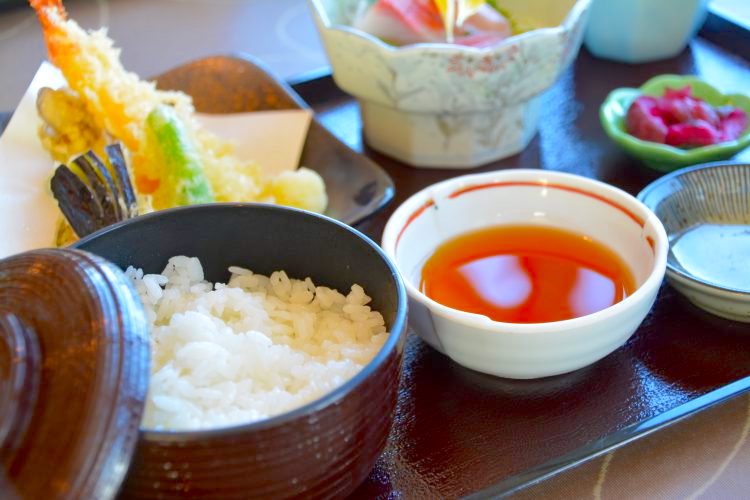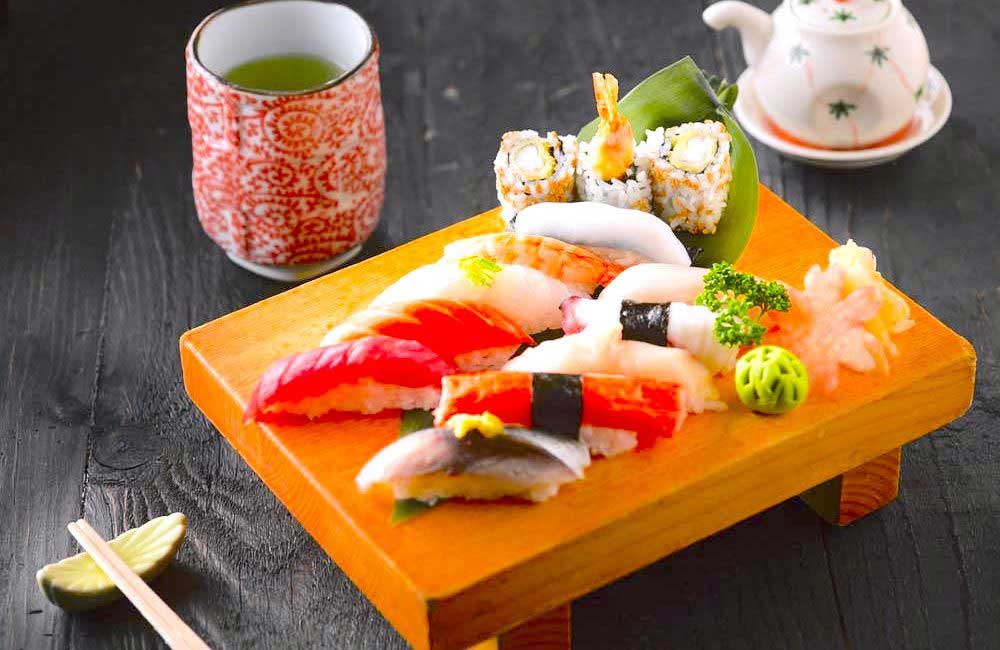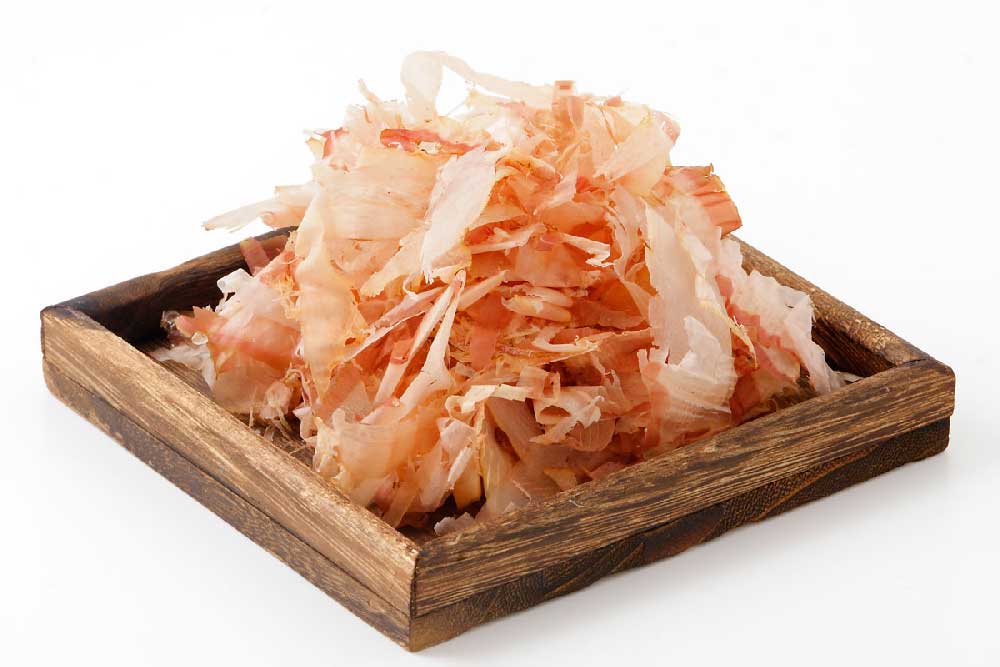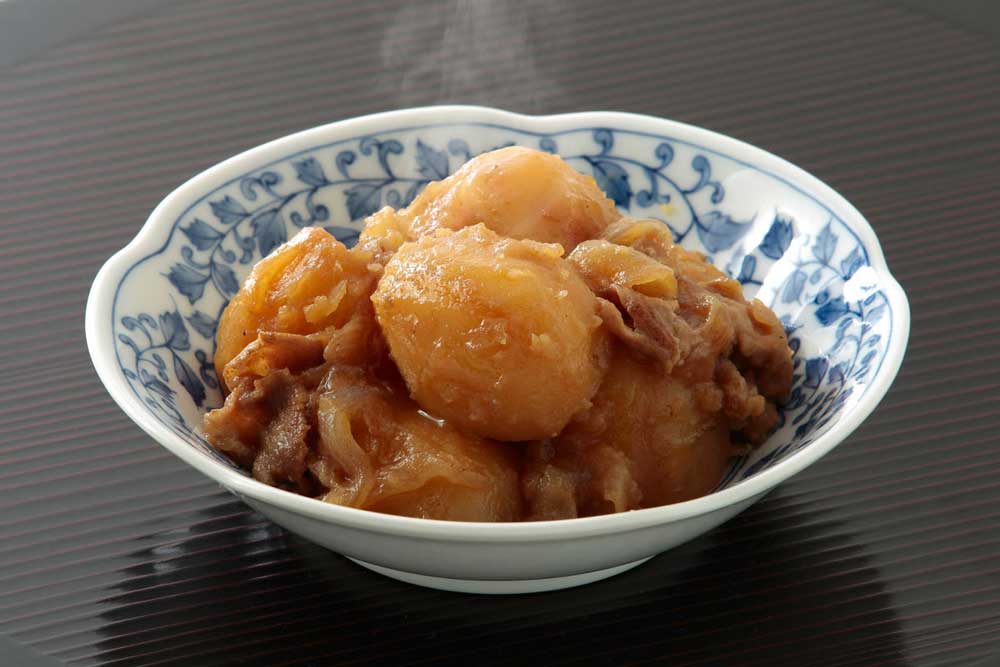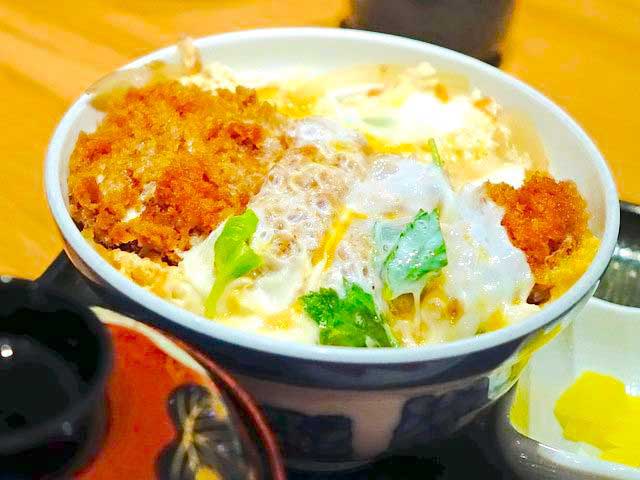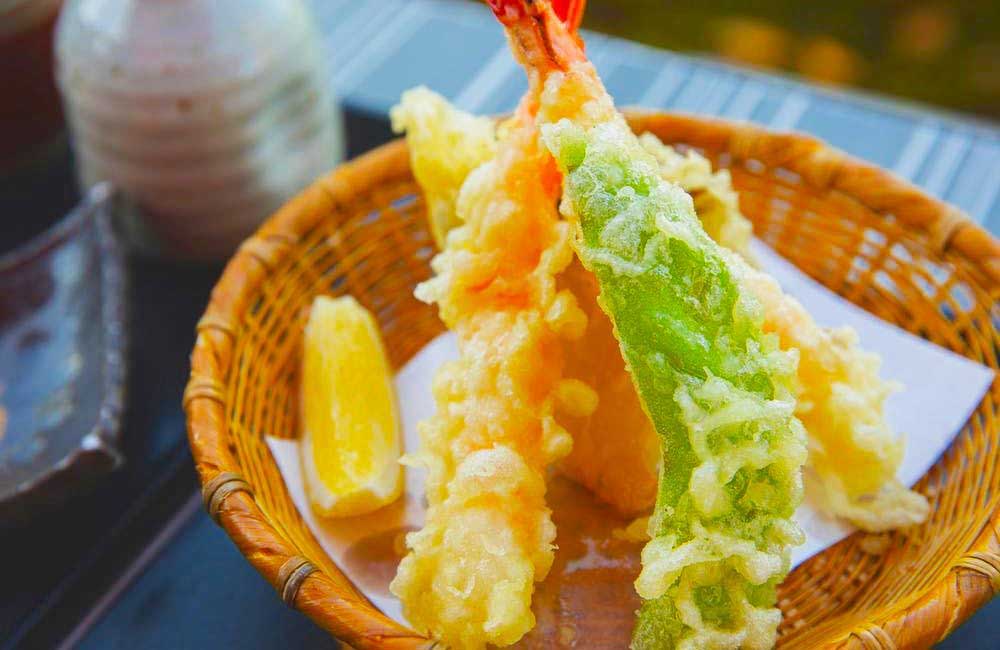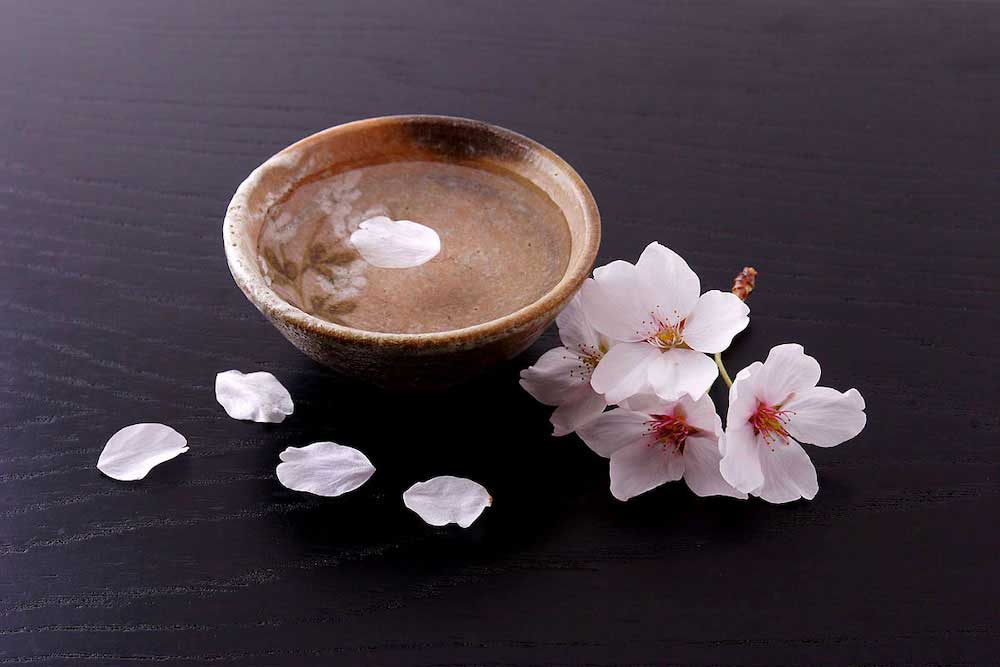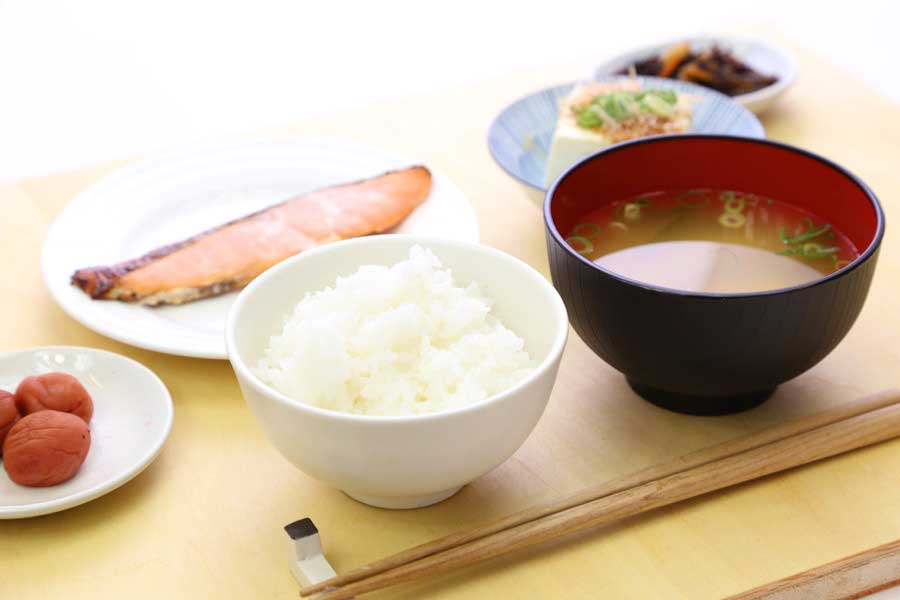
2013年に「ユネスコ無形文化遺産」に登録された和食。
豊かな自然を尊重する和のこころと優れた栄養バランス、そして四季の移ろいを表現した美しく繊細な飾りや盛り付けなど、日本が世界に誇る「和食」はますます海外から注目されています。
こちらの記事では、和食の基本的な素材と調味料を英語で説明する表現をまとめてみました。
和食の素晴らしさを英語で伝えてみたい!という方へ、ご参考になれば幸いです。
ご興味のある方は、当サイトで 英語クイズ(5000問) を出題しておりますので是非ご覧ください。
目次
和食の簡単な説明
和食
- Japanese cuisine
- Japanese dishes
Japanese cuisine is registered as an intangible cultural heritage and has become even better recognized worldwide.
(和食は、無形文化遺産に登録され、世界的にますます知られるようになりました。)
Washoku is healthy and well-balanced in nutrition.
(和食は、健康的で栄養バランスに優れています。)
Washoku reflects the beauty of nature and seasonal changes.
(和食は、自然の美しさと季節の変化を表現しています。)
Japanese food ですと、「日本の食べ物全般」の幅広い意味になります。
和定食
- Japanese-style set meal
- Japanese set meal with a steamed rice, miso soup, main dish, and side dishes
(ご飯、お味噌汁、おかず、小鉢などの定食)
The Japanese traditional meal consisting of three dishes and soup is a basic Japanese meal.
(昔ながらの和食は、「一汁三菜」が基本です。)
Ichiju-sansai consists of rice, miso soup and three side dishes.
(一汁三菜は、ご飯、お味噌汁、おかず3品から成っています。)
和食でよく使われる調味料
お醤油とお味噌は、和食の味付けにおいて最も基本的な調味料です。
お醤油 / Soy sauce

Shoyu is termed soy sauce in English.
(お醤油は、英語で soy sauce といいます。)
Shoyu is a Japanese staple seasoning made from soybeans.
(お醤油は、日本の定番の調味料で、大豆からつくられています。)
Shoyu is a Japanese condiment made by maturing a mixture of soybeans, wheat, and sea salt.
(お醤油は、大豆、小麦、お塩を混ぜて熟成させた調味料です。)
Soy sauce is one of the most important seasonings in Japanese cuisine and is the base of many Japanese dishes.
(お醤油は、日本料理の最も重要な調味料のひとつです。)
It is essential for sashimi and nigiri-zushi.
(お刺身や握り寿司にはお醤油が欠かせません。)
The use of soy sauce ranges from home cooking to high-class restaurant foods, including sushi, sashimi, dashi broth for soba, udon, seasonings for boiled foods, sauce for donburimono and ramen.
(お醤油は、お寿司、お刺身、お蕎麦やうどんなどの出汁、煮物の味付け、丼物のたれ、ラーメンなどをはじめ、家庭料理から高級料理まで使われます。)
There are many kinds of soy sauce available, from a less salty type to a sweet type.
(減塩から甘口まで、お醤油には様々な種類があります。)
It is not an overstatement to say that no Japanese cuisine is complete without soy sauce.
(お醤油がなければ、日本料理は成り立たないといっても過言ではありません。)
Without soy sauce, the Japanese can’t eat sushi, sashimi, sukiyaki, or even season any of their cooking.
(お醤油がなければ、日本人はお寿司もお刺身もすき焼きも食べることはできませんし、お料理の味付けさえもできません。)
Accordingly, it can be said that it constitutes the basis of the Japanese people’s sense of taste.
(それゆえに、お醤油は日本人の味覚の基本を成しているといえるでしょう。)
お味噌 / soybean paste
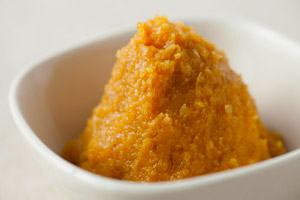
Miso is as indispensable as soy sauce to Japanese cuisine.
(お味噌は、お醤油と同様に日本料理に欠かせないものです。)
Miso’s main ingredient is soybeans.
(お味噌の主原料は大豆です。)
Miso is a salty paste produced by fermenting soybeans with salt and rice malt.
(お味噌は大豆をお塩と米麹で発酵させて塩辛いペースト状にしたものです。)
Miso is a condiment in paste form made by slowly fermenting and maturing steamed soybeans with salt and koji (rice malt).
(お味噌は、大豆を蒸してお塩と麹を入れ、ゆっくりと発酵、熟成させたペースト状の調味料です。)
Miso is used as a seasoning for soup and simmered dishes, but is also eaten by itself without being cooked.
(お味噌は汁物や煮物に使われますが、調理せずにそのままでも使われます。)
Miso soup is a fundamental soup of Japanese home cuisine and constitutes the soup of the traditional Japanese meal called ichiju-sansai.
(お味噌汁は、日本の家庭料理の基本的なスープで、「一汁三菜」の「汁」にあたります。)
The miso soup is made by adding a variety of ingredients, such as negi (green onion), seaweed, or tofu, to dashi broth, then stirring in the soybean paste.
(お味噌汁は、ネギ、ワカメ、お豆腐などの様々な具材を出汁に加え、お味噌を溶き入れてつくります。)
みりん / Mirin
Mirin is usually translated as sweet cooking sake or sweet sake.
(みりんは普通、sweet cooking sake や sweet sake などと訳されます。)
Mirin is one of the essential seasonings for Japanese cooking.
(みりんは、日本料理において重要な調味料のひとつです。)
Mirin is similar to rice wine, but mirin has a lower alcohol percentage and more sugar.
(みりんは日本酒と似ていますが、みりんのほうがアルコール分が少なく糖分が多いです。)
When seasoned with mirin, your dish will have a soft, sophisticated sweet flavor.
(みりんで味付けをすると、上品で優しい甘さに仕上がります。)
基本の食材
日本料理によく使われる食材の英語表現です。
In Japan, various types of seaweed and root vegetables are eaten.
(日本では様々な種類の海藻や根菜が食べられています。)
Seaweed and root vegetables contain a lot of minerals and dietary fiber.
(海藻や根菜は、豊富なミネラルや食物繊維を含んでいます。)
お豆腐
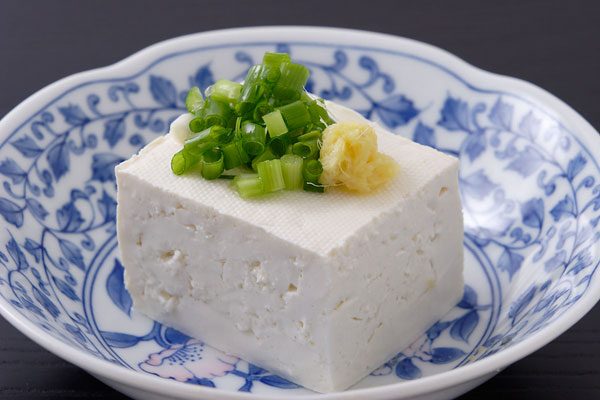
お豆腐は海外でもかなり有名ですので tofu でも通じることが多いですが、英語では主に以下の2つの言い方が一般的です。
- bean curd
- soybean curd
Tofu, also known as bean curd, is made by coagulating with nigari (natural bitterns) soymilk produced by boiling soybeans.
(お豆腐は、茹でた大豆を絞ってつくった豆乳を、にがりで固めたものです。)
Tofu is often eaten uncooked with soy sauce, negi (green onion), and grated ginger.
(お豆腐はよく、そのままでお醤油、ネギ、おろし生姜で食べられます。)
Tofu is used as an ingredient for miso soup and hot pot dishes.
お豆腐は、お味噌汁や鍋物の具などに使われます。
The tofu that feels silky smooth on your tongue is called “kinugoshi-tofu.”
(なめらかな舌触りのものは「絹ごし豆腐」と呼ばれています。)
Another tofu variety, momen-dofu, is firmer than kinugoshi-tofu, contains less moisture and its texture is a little coarse.
(もうひとつのお豆腐である「木綿豆腐」は、絹ごし豆腐よりも固く、水分が少なくてややキメの粗い食感のお豆腐です。)
Recently, Japanese tofu, which is high in protein and low in fat, has been gaining popularity in the West.
(最近では、高タンパクで脂質の少ないお豆腐が、欧米でも人気を得ています。)
海藻 / Seaweed
・海苔:laver または a sheet of laver
・ワカメ:brown seaweed または wakame seaweed
・ひじき:hijiki/hiziki seaweed
・もずく:mozuku seaweed
根菜 / Root vegetables
・大根:Japanese radish または daikon radish
・れんこん:lotus root
・ごぼう:burdock root
・椎茸:shiitake mushroom
・三つ葉:mitsuba または Japanese parsely
薬味 / Spice
・ネギ:green onion または Japanese leek
・わさび:wasabi または horseradish
Wasabi is used as a condiment for sushi and sashimi.
(わさびはお寿司やお刺身の薬味として使われます。)
Wasabi gives a hot and spicy flavor, but also helps keep food fresh because of its antibacterial effect.
(わさびは辛くてピリッとした風味を出すだけでなく、抗菌作用があるため食品を新鮮に保つのに役立ちます。)
・生姜:ginger
・みょうが:myoga radish
